The Cavalier King Charles Spaniel is a toy breed that combines a lap dog’s gentle attentiveness with a spaniel’s lively sporting instincts. This breed is named after King Charles II of England, who was so fond of his Spaniels that he issued a royal decree allowing them to enter any public place, including the Parliament. The Cavalier King Charles Spaniel is one of the most popular breeds in the United Kingdom and the United States and is known for its sweet, gentle, and affectionate temperament.
History of the Cavalier King Charles Spaniel
The Cavalier King Charles Spaniel traces its origins to the toy spaniels that have been popular in Europe since the 16th century. These Spaniels were often depicted in paintings by famous artists such as Van Dyck and Gainsborough. The toy Spaniels were especially favored by British royalty, especially King Charles I and his son Charles II, who gave the breed its name. The spaniels of King Charles were mostly black and tan or red and white and had long ears, flat heads, and high-set tails.
However, in the 18th and 19th centuries, the toy spaniels underwent a change in appearance due to crossbreeding with other breeds, such as the Pug and the Japanese Chin. The new type of toy spaniel had a shorter muzzle, a domed head, and protruding eyes. This type became known as the King Charles Spaniel or the English Toy Spaniel.
Some breeders, however, preferred the original form of the toy spaniel and tried to preserve it. In 1926, an American named Roswell Eldridge offered a prize for the best dogs of the old type at a dog show in England. His initiative sparked a revival of interest in the old type of toy spaniel, which was named the Cavalier King Charles Spaniel to distinguish it from the King Charles Spaniel. The Cavalier King Charles Spaniel Club was formed in 1928, and the breed was officially recognized by the Kennel Club in 1945. The breed was introduced to America in 1952 and was recognized by the American Kennel Club in 1995.
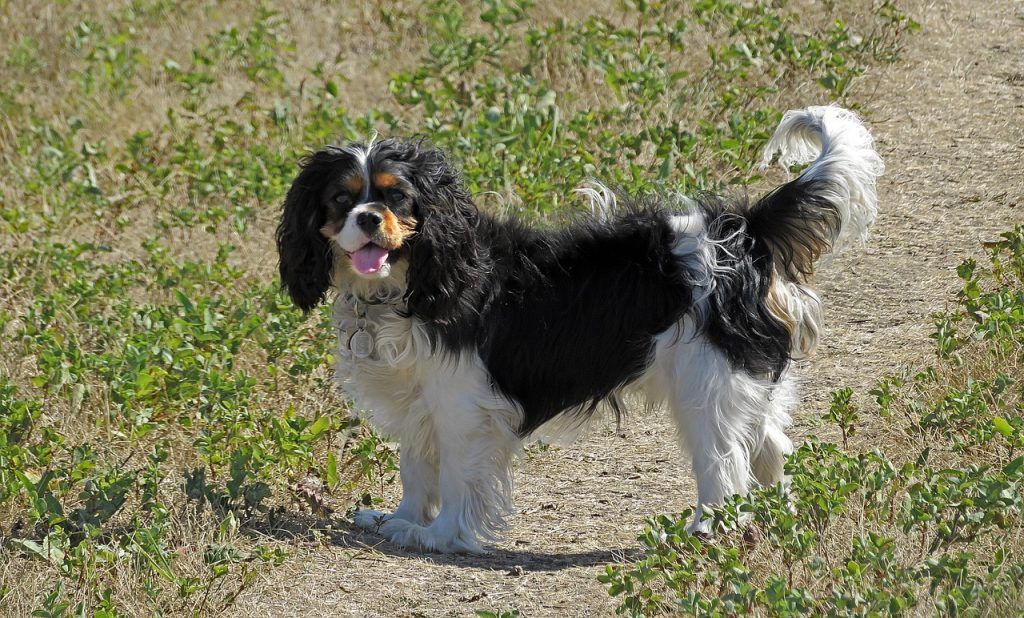
Breed Overview
| Dog Breed | Cavalier King Charles Spaniel |
|---|---|
| Nicknames | Cav, Cavalier, Cavie |
| Coat | Silky, smooth, medium-long, slightly wavy |
| Coat Colors | Blenheim (chestnut and white), tricolor (black/white/tan), black and tan, ruby (a rich red) |
| Coat Patterns | Solid or bicolor with or without markings |
| Weight | 13 to 18 pounds |
| Height | 12 to 13 inches at the shoulder |
| Lifespan | 12 to 15 years |
| Origin | United Kingdom |
| Breed Ranking | 14th out of 197 breeds by the American Kennel Club |
Physical Characteristics
The Cavalier King Charles Spaniel is a small dog that weighs between 13 and 18 pounds and stands between 12 and 13 inches at the shoulder. The breed has a silky, smooth coat that can be one of four colors: Blenheim (chestnut and white), tricolor (black/white/tan), black and tan, or ruby. Some dogs may have tan markings or white markings on their coats. The breed also has a distinctive feature called the “Blenheim spot,” which is a lozenge-shaped marking on the top of the head.
The Cavalier King Charles Spaniel has a graceful and elegant appearance, with a slightly rounded head, large round eyes, long ears, and a tapered muzzle. The tail is usually not docked and is carried happily. The breed has a friendly and expressive face that conveys its gentle and loving personality.
Personality
The Cavalier King Charles Spaniel is an ideal companion dog for people of all ages and lifestyles. The breed is very adaptable and can live in apartments or houses as long as it gets enough exercise and attention. The breed is also very sociable and gets along well with other dogs, cats, children, and strangers. The Cavalier King Charles Spaniel is not a good guard dog, as it tends to greet everyone with enthusiasm and affection.
The Cavalier King Charles Spaniel is a loyal and devoted dog that thrives on human companionship. The breed loves to cuddle and snuggle with its owner and will follow them around the house. The breed is also very playful and cheerful and enjoys games and toys. The Cavalier King Charles Spaniel is intelligent and eager to please, which makes it easy to train. However, the breed can also be sensitive and stubborn at times, so it needs gentle and positive reinforcement.
The Cavalier King Charles Spaniel is a happy-go-lucky dog that will brighten up any home with its charm and sweetness. The breed is often described as having a “cavalier” attitude, meaning that it does not take life too seriously and enjoys every moment. The Cavalier King Charles Spaniel is truly a royal companion that will make anyone feel like a king or queen.
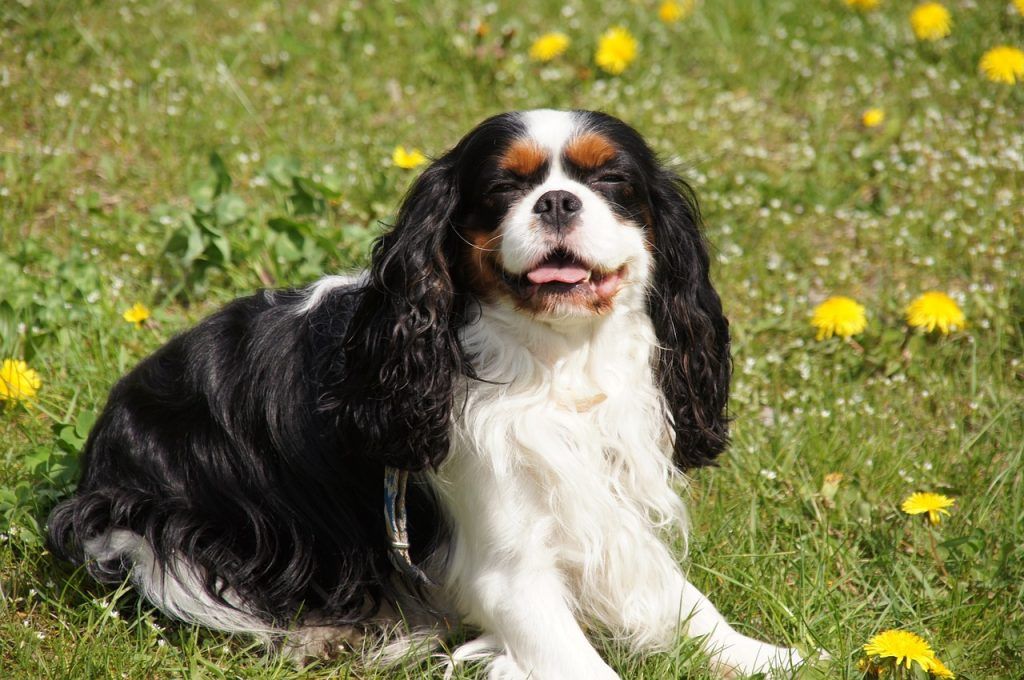
Common Health Issues
The Cavalier King Charles Spaniel is generally a healthy breed that can live up to 12 years or more. However, like any breed, it can be prone to certain health issues that owners should be aware of. Some of these issues include:
- Mitral valve disease: This heart condition affects many Cavaliers at some point in their lives. It occurs when the heart’s mitral valve becomes leaky and causes blood to flow back into the left atrium. This can lead to heart failure if left untreated.
- Syringomyelia: This neurological condition affects some Cavaliers due to their skull shape. It occurs when fluid-filled cavities form within the spinal cord near the brainstem. This can cause severe pain, itching, scratching, sensitivity to touch, weakness, or paralysis.
- Eye conditions: Cavaliers may inherit or develop various eye problems such as cataracts (clouding of the lens), progressive retinal atrophy (degeneration of the retina), dry eye (lack of tear production), or cherry eye (prolapse of the third eyelid gland). These conditions can affect vision or cause discomfort or infection if left untreated.
- Hip dysplasia: This joint disorder affects some Cavaliers due to their genetic makeup or environmental factors. It occurs when the hip joint does not fit properly into the socket due to abnormal growth or development. This can cause pain, arthritis, lameness, or reduced mobility.
- Patellar luxation: This joint disorder affects some Cavaliers due to their genetic makeup or environmental factors. It occurs when the kneecap slips out of place due to weak ligaments or muscles. This can cause pain, limping, or difficulty walking.
- Ear infections: Cavaliers are prone to ear infections due to their long ears that trap moisture, dirt, or debris. This can cause inflammation, irritation, odor, or discharge.
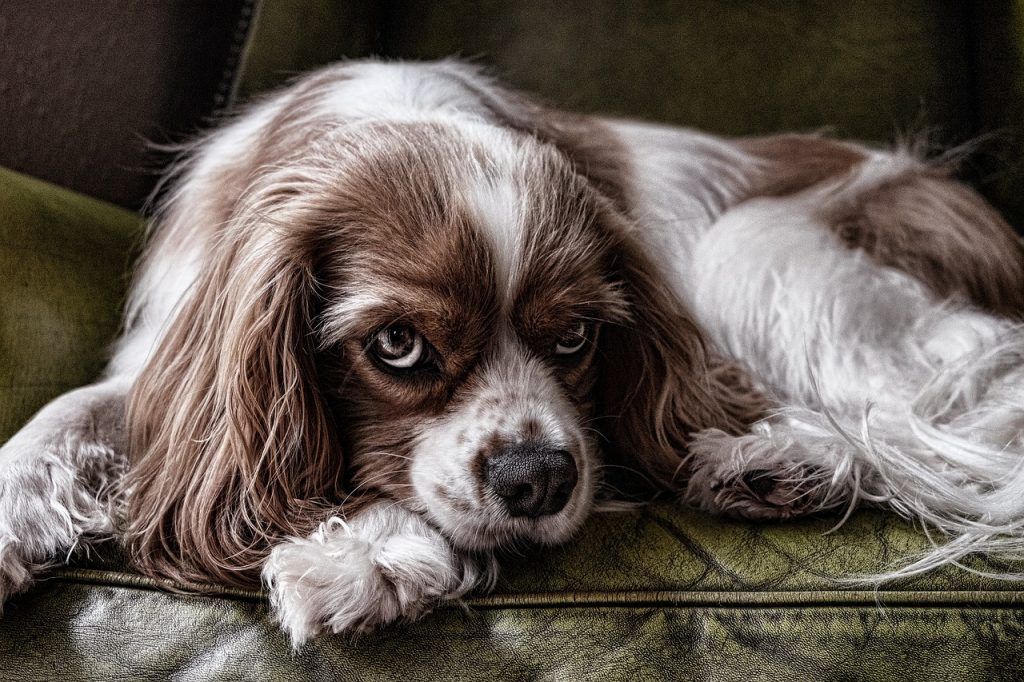
Caring for a Cavalier King Charles Spaniel
The Cavalier King Charles Spaniel is an easy-going dog that does not require much maintenance. However, some basic care is necessary to keep them healthy, happy, and comfortable. Some of these care tips include:
Feeding
Cavaliers need high-quality dog food that meets their nutritional needs according to their age, size, activity level, and health condition. They can gain weight easily, so their food intake should be monitored and adjusted accordingly. They also need fresh water at all times.
Exercise
Cavaliers need moderate exercise every day to keep them fit, mentally stimulated, and well-behaved. Exercise can include walks, play sessions, games, sports, or training activities. They should avoid exercising in hot or humid weather, as they can overheat easily. They should also avoid strenuous exercise for young Cavaliers, as they are still growing.
Training
Cavaliers are intelligent and eager to please, which makes them easy to train. They should be trained from an early age using positive reinforcement methods such as praise, treats, toys, or clickers. Training can help teach them basic commands, good manners, social skills, housebreaking, crate training, leash walking, etc. Training can also help prevent or correct any behavioral problems such as barking, chewing, digging, jumping, etc. Training can also strengthen the bond between Cavaliers and their humans.
Socialization
Cavaliers are very sociable and get along well with other dogs, cats, children, and strangers. They should be socialized from an early age with different people, animals, places, sounds, sights, etc. Socialization can help expose them to various situations in a safe and positive way. Socialization can also help prevent or reduce any fearfulness, aggression, shyness, etc. Socialization can also help make them more confident, friendly, outgoing, and adaptable.
Grooming
Cavaliers have a silky, smooth coat that needs regular brushing and bathing. Brushing should be done daily with a medium bristle or pin brush to remove dead hair, prevent tangles, and stimulate the natural oils in their skin.
Brushing should pay special attention to the ears, chest, back of the legs, tail, and underbelly, where mats can form easily. Before brushing, the coat should be lightly misted with water to avoid breaking the hair.
Bathing should be done once a month or as needed with a mild dog shampoo and conditioner. The eyes and face should be avoided when bathing and rinsed thoroughly to remove any residue. The Cavalier should be towel-dried immediately after bathing, then dried with a dog-friendly hairdryer on the lowest setting while brushing the coat until completely dry.
Trimming should be done every two to four weeks for the nails with a nail clipper or a grinder. The hair between the pads and toes should also be trimmed to prevent dirt, debris, or injuries.
Some people may choose to trim the hair on the feet, ears, tail, or body for a neater look, but this is optional and not required by the breed standard.
Interesting Facts
The Cavalier King Charles Spaniel is a charming, elegant toy breed that is fascinating and historical. Here are some interesting facts about this royal companion:
- They are often referred to as lap dogs, as they love to cuddle and snuggle with their owners. They were originally bred as companion dogs for the British royalty, who kept them warm in drafty castles and carriages.
- They are named after King Charles II of England, who was so fond of his Spaniels that he issued a royal decree allowing them to enter any public place, including the Parliament. However, this decree is likely a myth, as there is no evidence that it actually existed.
- They come in four colors: Blenheim (chestnut and white), tricolor (black/white/tan), black and tan, and ruby (a rich red). Some of them may have a “Blenheim spot,” which is a lozenge-shaped marking on the top of the head that is considered a sign of good luck. The colors may also signify the royal family that the spaniel belonged to in the past.
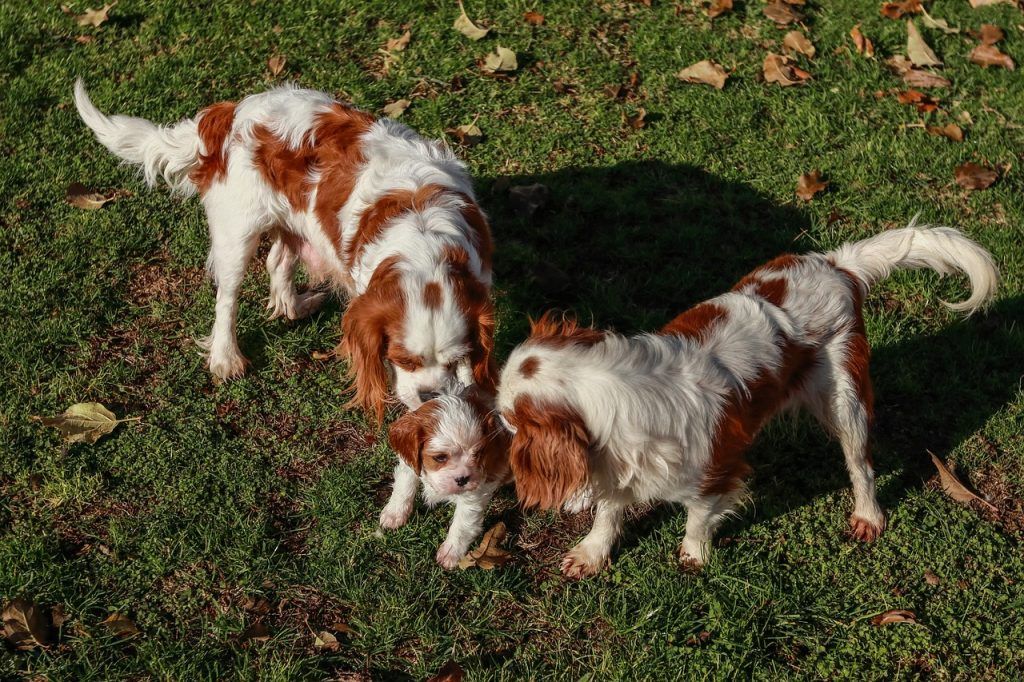
- They have a high-pitched bark because they originated from sporting dogs. They retain their hunting instincts and can chase after small animals or scents. They may also sniff out anything of interest, such as food or toys.
- They are very sociable and friendly dogs that get along well with other dogs, cats, children, and strangers. They are not good guard dogs, as they greet everyone enthusiastically and affectionately.
- They are natural athletes that excel at sports like agility, rally, and obedience. They are intelligent and eager to please, which makes them easy to train. They also have a “cavalier” attitude, meaning that they do not take life too seriously and enjoy every moment.
Where to Buy a Cavalier King Charles Spaniel
If you are interested in buying a Cavalier King Charles Spaniel, you should be prepared to pay a hefty price for this royal breed. The average cost of a Cavalier King Charles Spaniel puppy from a reputable breeder ranges from $1,800 to $3,500, depending on the dog’s location, quality, color, and pedigree. Some factors that can affect the price include:
- Location: The price of a Cavalier King Charles Spaniel may vary depending on the supply and demand of the breed in your area. Some regions may have more or fewer breeders, which can affect the availability and competition of the puppies. You may also have to factor in the cost of shipping or traveling if you buy a puppy from a distant breeder.
- Quality: The quality of a Cavalier King Charles Spaniel refers to how well it conforms to the breed standard and how healthy it is. A high-quality puppy will have a good temperament, a clear health history, and a strong genetic background. A low-quality puppy may have health problems, behavioral issues, or genetic defects. A high-quality puppy will usually cost more than a low-quality one, as it reflects the breeder’s investment in breeding and raising healthy and sound dogs.
- Color: The color of a Cavalier King Charles Spaniel can also affect its price, as some colors are rare or more desirable than others. The four recognized colors of the breed are Blenheim (chestnut and white), tricolor (black/white/tan), black and tan, and ruby (a rich red). Some breeders may charge more for ruby Cavaliers, as they are less common than the other colors. Some breeders may also charge more for puppies with a “Blenheim spot,” which is a lozenge-shaped marking on the top of the head that is considered a sign of good luck.
- Pedigree: The pedigree of a Cavalier King Charles Spaniel refers to its ancestry and lineage. A puppy with a champion bloodline will have parents or ancestors that have won titles or awards in dog shows or competitions. A champion bloodline indicates that the puppy has inherited the best qualities of its breed and has a high potential for excellence. A puppy with a champion bloodline will usually cost more than a puppy with an ordinary bloodline, as it reflects the breeder’s reputation and achievement.
To find a reputable breeder of Cavalier King Charles Spaniels, you should do some research and ask for referrals from trusted sources. You can also check with the American Cavalier King Charles Spaniel Club (ACKCSC), which is the national parent club for the breed in the United States. The ACKCSC has a list of regional clubs and breeder referrals on its website. You can also search for Cavalier King Charles Spaniel puppies on the American Kennel Club (AKC) Marketplace, which only features breeders who follow the AKC’s standards and guidelines.
Another option to buy a Cavalier King Charles Spaniel is to adopt one from a rescue or shelter. Many Cavaliers need new homes for various reasons, such as abandonment, abuse, neglect, or owner surrender. Adopting a Cavalier King Charles Spaniel can be rewarding and cost-effective, as you can save a life and pay less than buying from a breeder. The average adoption fee for a Cavalier King Charles Spaniel ranges from $50 to $300, which usually covers spaying/neutering, microchipping, and basic vet care.
You can check with your local animal shelters or humane societies to find a Cavalier King Charles Spaniel for adoption. You can also contact breed-specific rescues that specialize in rehoming Cavaliers. The ACKCSC has a list of rescue contacts on its website.
Whether you buy or adopt a Cavalier King Charles Spaniel, you should be prepared to provide it with love, care, and attention for its lifetime. A Cavalier King Charles Spaniel is an expensive purchase and a lifelong commitment and responsibility.
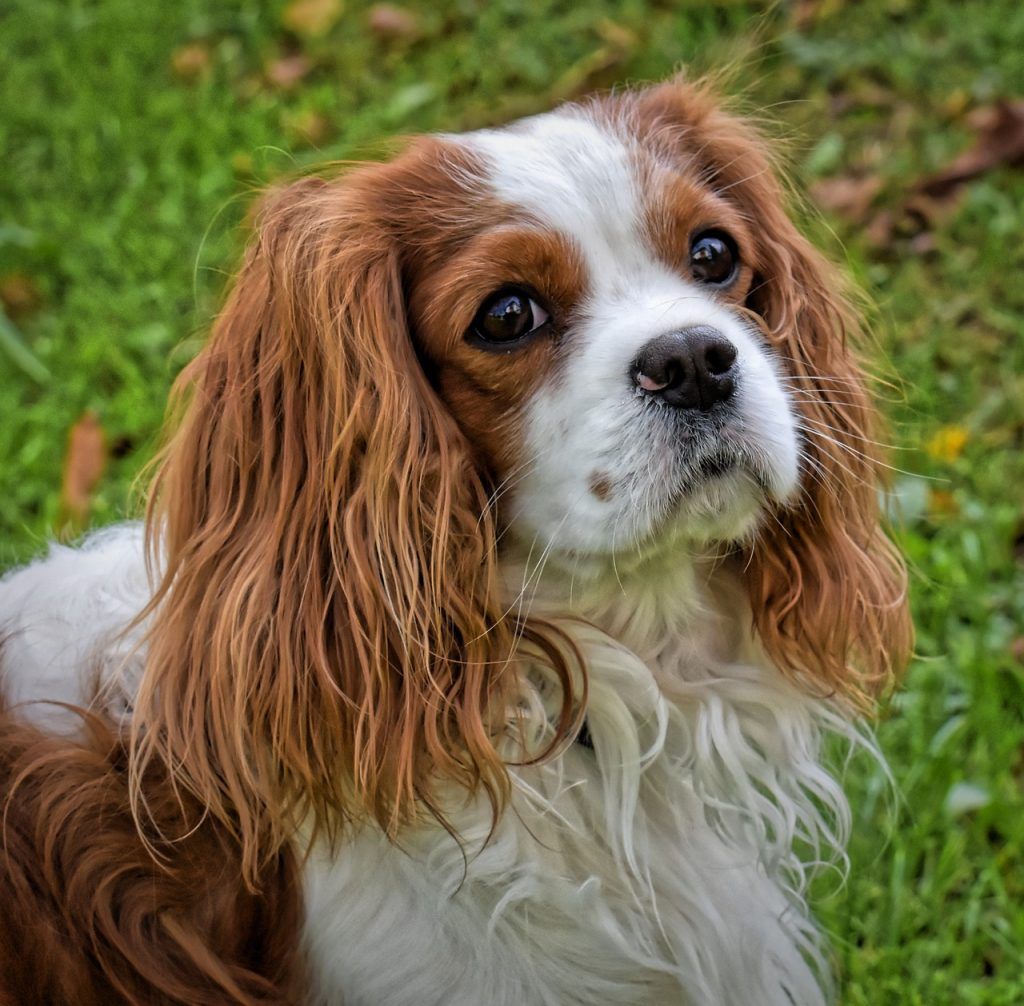
Conclusion
The Cavalier King Charles Spaniel is a charming and elegant toy breed that makes a wonderful companion for anyone who loves a cuddly and playful dog. The breed has a rich history that dates back to British royalty and has four distinct color patterns that add to its beauty. The breed is also very adaptable and sociable and can fit in any home or lifestyle. The breed does require some regular grooming to keep its coat shiny and healthy, but this can be easily done at home or by a professional groomer. The breed also needs some moderate exercise and training to keep it fit and well-behaved. The breed is prone to some health issues that owners should be aware of and monitor regularly with a veterinarian. The Cavalier King Charles Spaniel is truly a royal companion that will make anyone feel like a king or queen.
More Dog Breeds
If you’re interested in learning about similar dog breeds, check out:
Or, Browse our entire collection of dog breeds!
FAQ
Why is my Cavalier King Charles Spaniel so big?
One reason could be genetics, as some Cavaliers may inherit larger genes from their parents or ancestors. Another reason could be overfeeding, as Cavaliers are prone to obesity and can gain weight easily if they eat too much or exercise too little. A third reason could be health issues, such as hypothyroidism or Cushing’s disease, which can cause weight gain and growth abnormalities.
Do Cavalier King Charles Spaniels shed?
Yes, Cavalier King Charles Spaniels do shed their fur, especially during the spring and fall seasons when they change their coats. Their shedding is not excessive but noticeable and may require regular brushing and grooming to keep their coat clean and healthy. You may also need to vacuum your furniture and floors more often to remove the loose hair.
Are Cavalier King Charles Spaniels hypoallergenic?
No, Cavalier King Charles Spaniels are not hypoallergenic dogs. However, some people may be less allergic to Cavaliers than other breeds, as they have a silky and smooth coat that does not trap as many allergens as a curly or wiry coat.
How much does a Cavalier King Charles Spaniel cost?
The average cost of a Cavalier King Charles Spaniel puppy from a reputable breeder ranges from $1,800 to $3,500.
Do Cavalier King Charles Spaniels bark a lot?
Cavalier King Charles Spaniels are not noisy dogs but occasionally bark for various reasons. They may bark to alert you of someone at the door, to express their excitement or happiness, to get your attention or ask for something, or to communicate with other dogs. They may also bark if they are bored, lonely, anxious, or scared. You can train your Cavalier to reduce their barking by teaching them the “quiet” command and rewarding them for being silent.
























